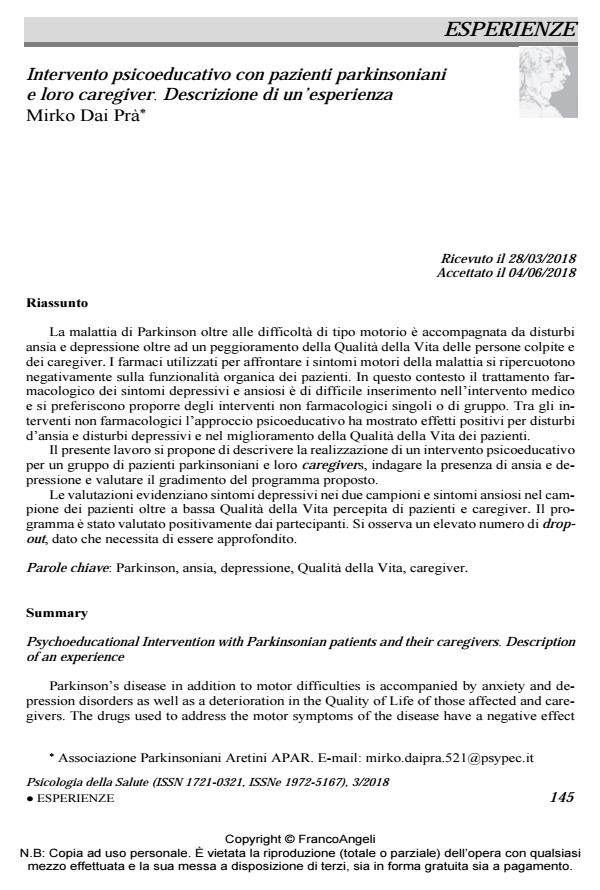Psychoeducational Intervention with Parkinsonian patients and their caregivers. Description of an experience
Journal title PSICOLOGIA DELLA SALUTE
Author/s Mirko Dai Prà
Publishing Year 2018 Issue 2018/3
Language Italian Pages 19 P. 145-163 File size 310 KB
DOI 10.3280/PDS2018-003008
DOI is like a bar code for intellectual property: to have more infomation
click here
Below, you can see the article first page
If you want to buy this article in PDF format, you can do it, following the instructions to buy download credits

FrancoAngeli is member of Publishers International Linking Association, Inc (PILA), a not-for-profit association which run the CrossRef service enabling links to and from online scholarly content.
Parkinson’s disease in addition to motor difficulties is accompanied by anxiety and de-pression disorders as well as a deterioration in the Quality of Life of those affected and caregivers. The drugs used to address the motor symptoms of the disease have a negative effect on the organic functionality of the patients. In this context, the pharmacological treatment of Depressive and Anxiety symptoms is difficult to include in the medical intervention and it is preferred to propose single or group non-pharmacological interventions. Among the non-pharmacological intervention, the psycho educational approach has shown positive effects on anxiety disorders and depressive disorders and in improving the Quality of Life of patients. The present work aims to describe the realization of a psychoeducational intervention for a group of Parkinsonian patients and their caregivers, to investigate the presence of anxiety and depression and to evaluate the approval of the proposed program. Evaluations show depressive symptoms in the two samples and symptoms of the patient sample in addition to low perceived Quality of Life of patients and caregivers. The program was positively evaluated by the participants. A high number of dropouts is observed, as it needs to be investigated.
Keywords: Parkinson, anxiety, depression, Quality of Life, caregivers.
Mirko Dai Prà, Intervento psicoeducativo con pazienti parkinsoniani e loro caregiver. Descrizione di un’esperienza in "PSICOLOGIA DELLA SALUTE" 3/2018, pp 145-163, DOI: 10.3280/PDS2018-003008